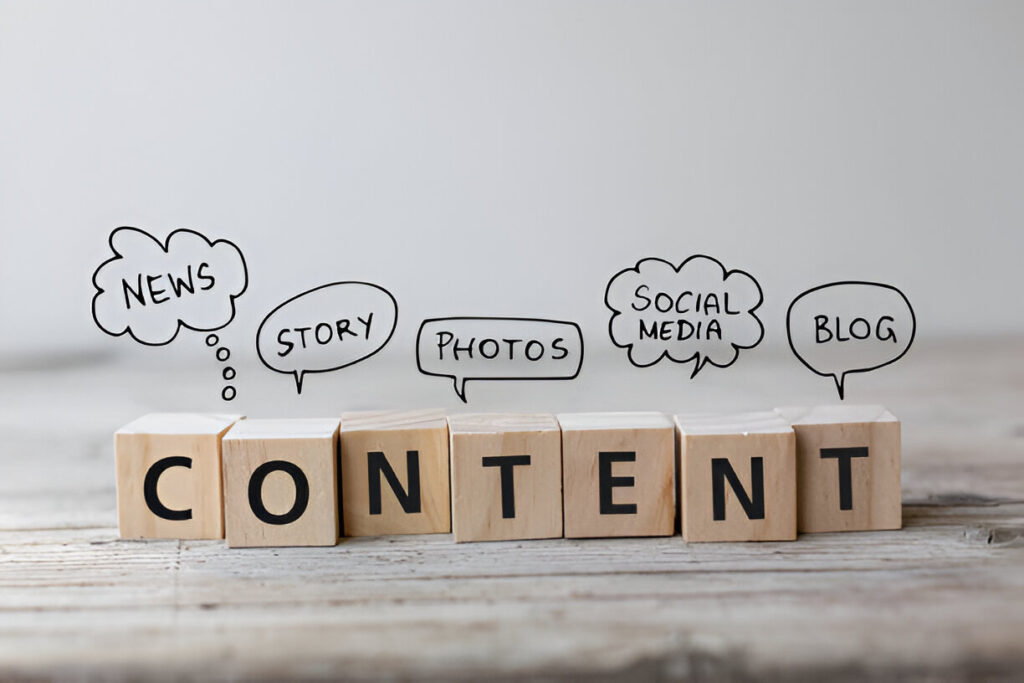B2B content marketing is the backbone of modern business growth. In today’s digital world, buyers are smarter, competition is tougher, and trust is everything.
If you want to stand out, you need more than just a product—you need authority, expertise, and a strategy that puts your brand in front of the right decision-makers at the right time.
This guide will show you how to master B2B content marketing in 2025 using proven strategies, practical tools, and the latest SEO best practices.
What is B2B Content Marketing?
B2B content marketing means creating and sharing valuable content to attract, engage, and convert other businesses—not individual consumers.
It’s about solving problems, building trust, and guiding buyers through long, complex decision cycles. Unlike B2C, where purchases are quick and emotional, B2B buyers research deeply, involve more stakeholders, and demand clear proof of value.
Why B2B Content Marketing Matters in Today’s Digital Landscape

Longer Sales Cycles: B2B deals take time. Content keeps your brand top-of-mind throughout the journey.
Multiple Decision-Makers: Content helps educate and align everyone involved.
Trust and Authority: High-quality, helpful content builds your reputation and makes you a go-to resource.
SEO and Visibility: Well-optimized content ensures you show up where buyers are searching—especially with Google’s AI overviews and voice search features
How This Guide Will Help You Build an Effective B2B Content Marketing Strategy
This guide covers everything you need to know, from understanding what makes B2B content different to choosing the right tools, optimizing for Google’s latest updates, and measuring success. You’ll learn actionable steps to build trust, drive leads, and grow your business in 2025.
Understanding B2B Content Marketing
Definition and Key Differences from B2C Content Marketing
Audience: B2B targets businesses, not individuals.
Sales Process: Longer, with more research and approvals.
Content Focus: Educational, data-driven, and solution-oriented.
Buying Motivation: ROI, efficiency, and business impact—not emotions7.
The Role of Content in the B2B Buyer’s Journey
Content is crucial at every stage:
Awareness: Blog posts, infographics, and videos introduce your brand.
Consideration: Case studies, whitepapers, and webinars show expertise.
Decision: Product demos, pricing guides, and testimonials help close the deal.
Importance of Trust and Authority (EEAT) in B2B Content
Google’s EEAT (Experience, Expertise, Authoritativeness, Trustworthiness) is more important than ever. B2B buyers want proof you know your stuff. Show credentials, cite reputable sources, and include real-world results to boost credibility.
Building a Winning B2B Content Marketing Strategy
Setting Clear Goals and KPIs for B2B Content
Start with clear objectives:
Increase qualified leads
Boost website traffic
Grow brand authority
Improve conversion rates
Track KPIs like organic traffic, lead quality, engagement, and sales pipeline impact.
Identifying and Understanding Your Target Audience
Research your ideal customer profiles (ICPs)
Map out buyer personas: roles, pain points, goals
Use surveys, interviews, and analytics to refine your understanding.
Mapping Content to Buyer Personas and Stages of the Sales Funnel
Create content for each stage:
Awareness: Educational guides, industry news
Consideration: Comparisons, solution overviews
Decision: Testimonials, ROI calculators, demos
Incorporating Google’s EEAT Principles for Credibility and Trust
Feature expert authors with bios
Add client testimonials and case studies
Cite industry data and research
Keep content up-to-date and fact-checked
Types of Content That Work Best for B2B
Educational Blog Posts and Articles
Answer common industry questions
Share actionable tips and how-tos
Use keyword-rich headings for SEO.
Case Studies and Success Stories
Show real-world results and ROI
Include client quotes and data
Ideal for the consideration and decision stages.
Whitepapers, Ebooks, and Research Reports
Deep dives into trends and solutions
Gate for lead generation (email capture)
Establish authority and thought leadership.
Videos, Webinars, and Podcasts
Explain complex topics simply
Feature expert interviews and product demos
Great for engagement and sharing.
Interactive Content and Tools
ROI calculators, quizzes, product selectors.
Boost engagement and collect data.
Stand out in AI overviews and search snippets.
Content Marketing Tools and Platforms for B2B

Best Content Marketing Platforms to Manage and Distribute Content
HubSpot, SEMrush, and Contentful for planning and publishing
Integrate with CRM and analytics for full-funnel tracking
Tools for Keyword Research and SEO Optimization
SEMrush, Ahrefs, Google Keyword Planner
Focus on long-tail, intent-driven keywords
Use actual Google search data for accuracy
Analytics Tools to Measure Content Performance
Google Analytics, Hotjar, HubSpot Analytics
Track traffic, engagement, and conversions
AI-Powered Tools for Content Creation and Personalization
Jasper, Copy.ai, MarketMuse
Use AI for outlines, drafts, and content optimization
Personalize content for different buyer personas
Creating SEO-Friendly B2B Content
Keyword Research Tips for B2B Content Marketing
Start with buyer pain points and industry terms
Use long-tail keywords and questions
Analyze competitor keywords and fill content gaps
Writing Clear, Simple, and Engaging Content for Voice Search
Use natural language and short sentences
Answer questions directly (“what is…”, “how to…”)
Optimize for featured snippets and AI overviews.
Optimizing On-Page SEO: Titles, Headings (H1, H2, H3), Meta Descriptions
Include focus keywords in H1, H2, and meta tags
Keep titles under 60 characters and descriptions under 155
Use keyword-rich, descriptive headings for each section.
Using Structured Data and Schema Markup to Boost Visibility
Add FAQ, HowTo, and Article schema
Help Google understand and feature your content in rich results.
Internal Linking Best Practices for SEO and User Experience
Link to related articles, guides, and product pages
Use descriptive anchor text with keywords
Create pillar and cluster content structures for topical authority
Content Promotion and Distribution Strategies

Leveraging Social Media for B2B Content Marketing
Share content on LinkedIn, Twitter, and niche forums
Use branded hashtags and tag industry influencers
Repurpose content into short posts, infographics, and videos.
Email Marketing Campaigns That Convert
Segment lists by persona and stage
Send personalized, value-driven emails
Use clear CTAs to drive engagement
Partnering with Industry Influencers and Thought Leaders
Collaborate on webinars, podcasts, and guest posts
Feature expert quotes and opinions in your content
Paid Promotion Options: PPC and Sponsored Content
Use Google Ads and LinkedIn Ads for targeted reach
Promote high-value content like webinars and ebooks
Measuring Success and Optimizing Your Strategy
Key Metrics to Track: Traffic, Engagement, Leads, and Conversions
Organic traffic and rankings
Time on page and bounce rate
Number of leads and conversion rate
Using Analytics to Understand What Works and What Doesn’t
Review top-performing content and topics
Identify drop-off points and improve weak areas
A/B test headlines, CTAs, and formats
Continuous Improvement: Updating and Repurposing Content
Refresh outdated stats and information
Repurpose blogs into videos, infographics, or podcasts
Use feedback and analytics to refine your approach
Aligning Your Strategy with Google’s Latest Algorithm Updates
Follow EEAT guidelines for trust and authority
Optimize for mobile, speed, and Core Web Vitals
Use schema markup and voice search optimization
Real-Life B2B Content Marketing Examples
Case Study 1: How Company X Increased Leads with Content
Company X shifted from product-centric blogs to solution-focused guides. They used pillar pages and internal linking to boost SEO. Within six months, organic leads grew by 40% and sales teams reported higher-quality conversations.
Case Study 2: Using Video to Boost Engagement in B2B
Company Y created a series of explainer videos and webinars. By embedding these in key landing pages and sharing on LinkedIn, they saw a 60% increase in engagement and a 25% rise in demo requests.
Lessons Learned from Top B2B Brands
Focus on education, not just promotion
Use multiple content formats to reach all buyer types
Regularly update and optimize content for the latest search trends
Conclusion
B2B content marketing is more than a trend—it’s a proven way to build authority, generate leads, and grow your business in 2025.
By focusing on trust, expertise, and the needs of your audience, you can create content that stands out in search, earns Google’s trust, and delivers real results.
Start by setting clear goals, choosing the right tools, and always optimizing for the latest SEO best practices.
Frequently Asked Questions (FAQs)
Top tools include HubSpot, SEMrush, and Contentful for managing and distributing content, along with AI-powered platforms like Jasper for creation and optimization.
Aim for consistency—at least one high-quality piece per week. Focus on quality over quantity and update older content regularly for the best results.
Use keyword-rich headings, optimize meta tags, add internal links, and keep your content updated. Follow EEAT principles and use schema markup for rich results
AI helps with content creation, keyword research, personalization, and optimization. It also powers Google’s AI overviews and voice search, so your content needs to be clear, direct, and well-structured to be featured.